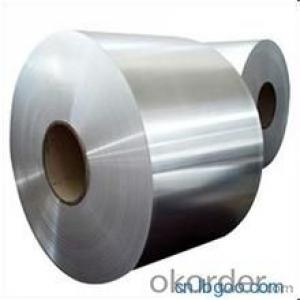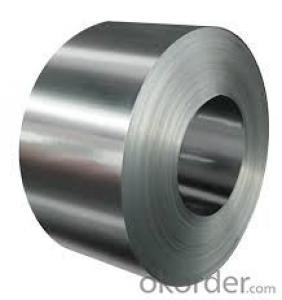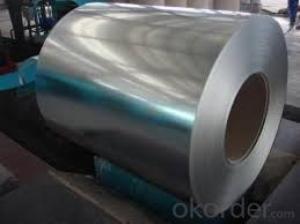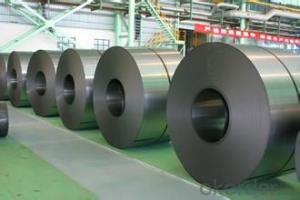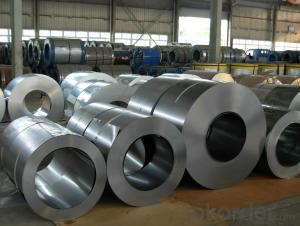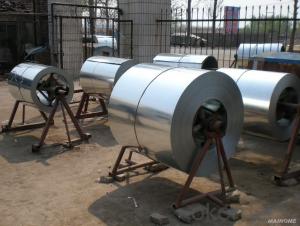Cold Rolled Steel/ Hot Steel Rolled different size
- Loading Port:
- Shanghai
- Payment Terms:
- TT OR LC
- Min Order Qty:
- 20 m.t.
- Supply Capability:
- 10000 m.t./month
OKorder Service Pledge
OKorder Financial Service
You Might Also Like
Product Description
Brief Introduction
The Cold Rolled Steel is steel that has been worked below its recrystallization temperature by passing it between a pair of rollers. Recrystallization temperature is the temperature at which grains in the lattice structure of the metal have been rearranged, leaving it free of strain and deformations. The Cold Rolled Steel is pre-treated before being cold rolled with a process known as pickling, which uses strong acids to remove scale and other impurities. The Cold Rolled Steel is then passed through rollers to reduce its thickness. Most cold rolling takes place in multiple passes and as the size of the Cold Rolled Steel is further reduced, its strength and hardness both increase, but its ductility decreases. After cold rolling, heating the metal up in a process known as annealing can restore some of its ductility. The final Cold Rolled Steel may be manufactured in the form of sheets, strips, bars, or other forms.
Specification
1. Thickness: 0.4-2.0mm
2. Width: 900-1250mm
3. Inner Diameter: 508mm
4. Weight of Steel Coil: 3-15MT
5. Heat Treatment: Annealed
6. Margin Status: EC & EM
7. Surface Quality: FB&FC
8. Surface Status: SB & SD
9. Surface Treatment: Oiling
Mechanical Properties
1. Yield Strength: ≤ 320MPa
2. Tensile Strength: ≤ 370MPa
3. Elongation (L=50mm, b=25mm) When:
(1) Nominal Thickness<0.25mm: 30%
(2) Nominal Thickness 0.25mm-<0.40: 32%
(3) Nominal Thickness 0.40-<0.60mm: 34%
(4) Nominal Thickness 0.60-<1.0mm: 36%
(5) Nominal Thickness 1.0-<1.6mm: 37%
(6) Nominal Thickness >1.6mm: 38%
Packing
We use Seaworthy Package to make sure Cold Rolled Steel is well-protected during the long ocean voyage.
Application
1. Base metal for coated and dipped products.
2. Home appliance
3. Precise welding tube
4. Flux cored welding wire
5. Bicycle, battery shell,
6. Automobile fitting, hardware
7. Enameling industry etc.
Superiority
1. High precision of dimensional tolerance
2. Excellent mechanical property such as the yield strength and tensile strength, etc.
3. Being highly resistant to denting
4. Exhibits useful magnetic properties
5. High quality surface finish and get well prepared for the surface coating
6. Available in a variety of sizes and shapes with characteristics useful in a wide range of applications
Chemical Components
| Grade | Chemical Components | ||||
| C | Mn | P | S | Alt | |
| DC01 | ≤0.12 | ≤0.50 | ≤0.035 | ≤0.025 | ≥0.020 |
| DC03 | ≤0.10 | ≤0.45 | ≤0.030 | ≤0.025 | ≥0.020 |
| DC04 | ≤0.08 | ≤0.40 | ≤0.025 | ≤0.020 | ≥0.020 |
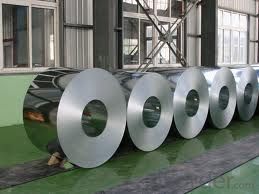
FAQ
1. Do you have QC team?
Yeah, sure, our QC team is very important, they will keep the quality control for our products.for quality inspection every day.
- Q: How do steel coil manufacturers stay updated with industry trends?
- Steel coil manufacturers utilize various methods to stay informed about industry trends: 1. Attending industry conferences and trade shows allows manufacturers to connect with other professionals, attend seminars and presentations, and learn about the latest trends and innovations in the steel coil industry. 2. Subscribing to industry publications and magazines provides manufacturers with regular updates on trends, market insights, and technological advancements in the steel coil industry. These publications often feature articles and interviews with experts, delivering valuable information to stay updated. 3. Actively participating in online forums, discussion boards, and social media groups dedicated to steel coil manufacturing helps manufacturers stay connected with the industry. These platforms allow them to engage with peers, share knowledge, ask questions, and stay updated on the latest trends. 4. Maintaining close relationships with suppliers and customers enables manufacturers to gain insights into changing market demands, new product requirements, and emerging trends. Suppliers and customers often share information about industry trends and advancements that assist manufacturers in adapting their processes accordingly. 5. Investing in continuous education and training programs for employees ensures that the workforce remains updated on the latest industry trends, technological advancements, and best practices. Prioritizing employee development equips manufacturers with the skills and knowledge necessary to stay ahead of the curve. 6. Allocating resources for research and development activities allows steel coil manufacturers to explore new materials, manufacturing techniques, and technologies. By investing in R&D, manufacturers can stay at the forefront of industry trends and develop innovative solutions that meet evolving customer demands. 7. Staying updated with government regulations, industry standards, and certifications that impact the steel coil industry is crucial. Compliance with these regulations often requires manufacturers to adopt new practices, technologies, or materials, ensuring that they remain up to date with the latest trends and requirements. By actively engaging in these activities, steel coil manufacturers can stay informed about industry trends, emerging technologies, and market demands. This enables them to adapt their processes, products, and strategies to remain competitive and meet the evolving needs of their customers.
- Q: How are steel coils used in the production of pipelines?
- Steel coils are used in the production of pipelines as they are rolled into flat sheets and then formed into the required shape. These coils provide the necessary strength and durability for the pipelines, ensuring they can withstand the high pressure and harsh conditions they will be exposed to.
- Q: How are steel coils inspected for surface finish variations?
- Steel coils are inspected for surface finish variations by using techniques such as visual inspection, magnetic particle inspection, and surface roughness measurement.
- Q: What are the different grades of steel used for making coils?
- There are several different grades of steel that are commonly used for making coils, depending on the specific application and requirements. Some of the most commonly used grades include: 1. Low carbon steel (also known as mild steel): This grade of steel is often used for making coils as it offers good formability, weldability, and machinability. It is suitable for a wide range of applications where strength and durability are not the primary requirements. 2. High carbon steel: This grade of steel contains higher levels of carbon, which provides increased strength and hardness. It is commonly used for making coils that require high strength and resistance to wear and tear, such as springs and automotive components. 3. Stainless steel: This grade of steel contains a high percentage of chromium, which provides excellent corrosion resistance. Stainless steel coils are commonly used in applications where resistance to rust and staining is crucial, such as kitchen appliances, automotive trim, and medical equipment. 4. Galvanized steel: This grade of steel is coated with a layer of zinc, which provides excellent corrosion resistance. Galvanized steel coils are commonly used in outdoor applications where exposure to moisture and other elements is a concern, such as roofing, fencing, and HVAC ductwork. 5. Electrical steel: This grade of steel is specially designed for use in electrical applications, such as transformers, motors, and generators. It has low levels of impurities and is optimized for high magnetic permeability and low core loss. 6. Advanced high-strength steel (AHSS): This grade of steel is engineered to provide exceptional strength while maintaining good formability. AHSS coils are commonly used in the automotive industry for lightweighting vehicles while ensuring structural integrity and crashworthiness. These are just a few examples of the different grades of steel used for making coils. The specific grade chosen will depend on factors such as the intended application, desired properties, and cost considerations.
- Q: How are steel coils used in the manufacturing of automotive accessories?
- Steel coils are commonly used in the manufacturing of automotive accessories due to their strength, durability, and versatility. These coils serve as the primary raw material for various components and parts used in the automotive industry. One of the most common uses of steel coils in automotive accessory manufacturing is for the production of body panels and frames. These coils are formed and shaped into the desired size and design, and then undergo various processes such as cutting, stamping, and welding to create the body panels and frames of vehicles. The high strength of steel coils ensures that the body panels and frames are sturdy enough to withstand the rigors of daily use and provide the necessary structural integrity to the vehicle. Additionally, steel coils are also used in the production of automotive suspension systems. Coil springs, which are integral components of the suspension system, are typically made from steel coils due to their ability to absorb and distribute the weight and impact of the vehicle. These coil springs contribute to a smooth and comfortable ride by providing the necessary support and shock absorption. Furthermore, steel coils are used in the manufacturing of automotive accessories such as exhaust systems, brackets, and brackets for various components. The coils are formed and shaped into the required design and then undergo processes like cutting, bending, and welding to create these accessories. The strength and durability of steel make these accessories capable of withstanding high temperatures, vibrations, and other harsh operating conditions. In summary, steel coils play a crucial role in the manufacturing of automotive accessories by providing the necessary strength, durability, and versatility required for various components and parts. From body panels to suspension systems and accessories, steel coils contribute to the overall quality, performance, and safety of automotive accessories.
- Q: What are the different types of steel coil finishes for aesthetics?
- There are multiple varieties of steel coil finishes utilized for aesthetic purposes, each offering a distinct appearance and texture to the steel surface. Some of the most prevalent finishes include: 1. Matte finish: This finish boasts a low-gloss appearance, providing a smooth and non-reflective surface. It imparts a clean and contemporary look to the steel coil, making it suitable for a range of architectural and interior design applications. 2. Brushed finish: Also referred to as a satin finish, this type of finish is achieved by brushing the steel surface with a fine abrasive material. It produces a subtle and directional grain pattern, resulting in a textured appearance. Brushed finishes are commonly employed in kitchen appliances, decorative elements, and furniture. 3. Mirror finish: As the name suggests, this finish creates an intensely reflective surface similar to a mirror. It is accomplished through the process of polishing the steel surface to a high shine using abrasive materials. Mirror finishes find common usage in architectural applications like decorative panels, elevator doors, and signage. 4. Patterned finish: This finish involves embossing or etching a pattern onto the steel surface, ranging from simple geometric designs to intricate textures. It offers a unique and visually captivating appearance. Patterned finishes are widely used in interior design, automotive trims, and decorative panels. 5. Textured finish: Textured finishes are created by applying a texture to the steel surface, such as a stucco or diamond pattern. This enhances depth and visual interest, making it suitable for various applications including wall cladding, roofing, and garage doors. 6. Colored finish: Apart from different surface textures, steel coils can also be finished with a variety of colors. This is achieved by applying a coating or paint system, which enhances both the aesthetic appeal and protection against corrosion. Colored finishes are commonly employed in architectural applications such as building facades, window frames, and decorative elements. Ultimately, the choice of steel coil finish depends on the desired aesthetic outcome, as well as the specific requirements and intended application of the steel product.
- Q: How are steel coils used in the production of furniture components?
- Due to their strength, durability, and versatility, steel coils are frequently utilized in the manufacturing of furniture components. These coils, crafted from high-quality steel, undergo a process of uncoiling before being fed into a machine known as a stamping press. Within the stamping press, a die is employed to shape and cut the steel coil into various components necessary for furniture production, such as chair frames, table legs, or brackets. The utilization of steel coils facilitates the mass production of furniture components with uniform dimensions and exceptional accuracy. The robustness of steel guarantees that these components can withstand heavy loads, providing stability to the furniture. Additionally, steel coils possess the ability to be effortlessly molded into diverse shapes and sizes, enabling the creation of a vast array of furniture designs. Furthermore, steel coils are frequently subjected to protective treatments or coatings, such as paints or galvanization, in order to enhance their resistance to corrosion, moisture, and wear. This ensures that the furniture components possess a longer lifespan and retain their aesthetic appeal over time. In conclusion, the presence of steel coils plays a vital role in the production of furniture components, as they offer strength, durability, and versatility. They enable the mass production of precise and consistent components, while their protective coatings guarantee the durability and quality of the final furniture products.
- Q: Are steel coils used in shipbuilding?
- Yes, steel coils are commonly used in shipbuilding. They are used primarily for the construction of the ship's hull and other structural components due to their strength, durability, and ability to withstand harsh marine environments.
- Q: How are steel coils used in the production of metal signage?
- Steel coils are an essential component in the production of metal signage. These coils are typically made from high-quality steel and come in various thicknesses and widths. The use of steel coils allows for efficient and cost-effective manufacturing processes. To begin, steel coils are unwound and fed into a machine called a roll former or a metal press. This machine shapes the steel into the desired form and design for the signage. The coils' ability to be easily manipulated and shaped makes them ideal for creating intricate and customized signage designs. Once the steel has been formed, it can undergo various processes to enhance its appearance and durability. For instance, the steel may be coated with a layer of paint or powder coating to protect it from corrosion and provide a visually appealing finish. This coating can also be customized to match specific branding or design requirements. After the steel has been shaped and coated, it can be further processed to add features such as embossing or perforations. These additional details can enhance the overall aesthetic appeal of the metal signage and make it stand out. Furthermore, steel coils offer excellent structural integrity, ensuring that the metal signage remains strong and durable even in harsh environmental conditions. This durability is particularly crucial for outdoor signage that needs to withstand exposure to weather elements such as rain, wind, and sunlight. In summary, steel coils play a vital role in the production of metal signage. Their versatility, durability, and ease of manipulation make them an ideal material for creating customized designs. Whether it's for indoor or outdoor use, steel coils provide the necessary strength and aesthetic appeal required for high-quality metal signage.
- Q: When maintaining a japanese knife: Is a honing steel still necessary if I have a fine 3000/8000 grit whetstone?which do you prefer?
- A steel is to clean off an edge and remove any bends on the bevel, it is not directly for sharpening as it removes no material from the knife (or should not). A whetstone, however fine, does remove material. A steel to maintain an edge, a stone to restore an edge. They are different items for different purposes.
Send your message to us
Cold Rolled Steel/ Hot Steel Rolled different size
- Loading Port:
- Shanghai
- Payment Terms:
- TT OR LC
- Min Order Qty:
- 20 m.t.
- Supply Capability:
- 10000 m.t./month
OKorder Service Pledge
OKorder Financial Service
Similar products
Hot products
Hot Searches
Related keywords
